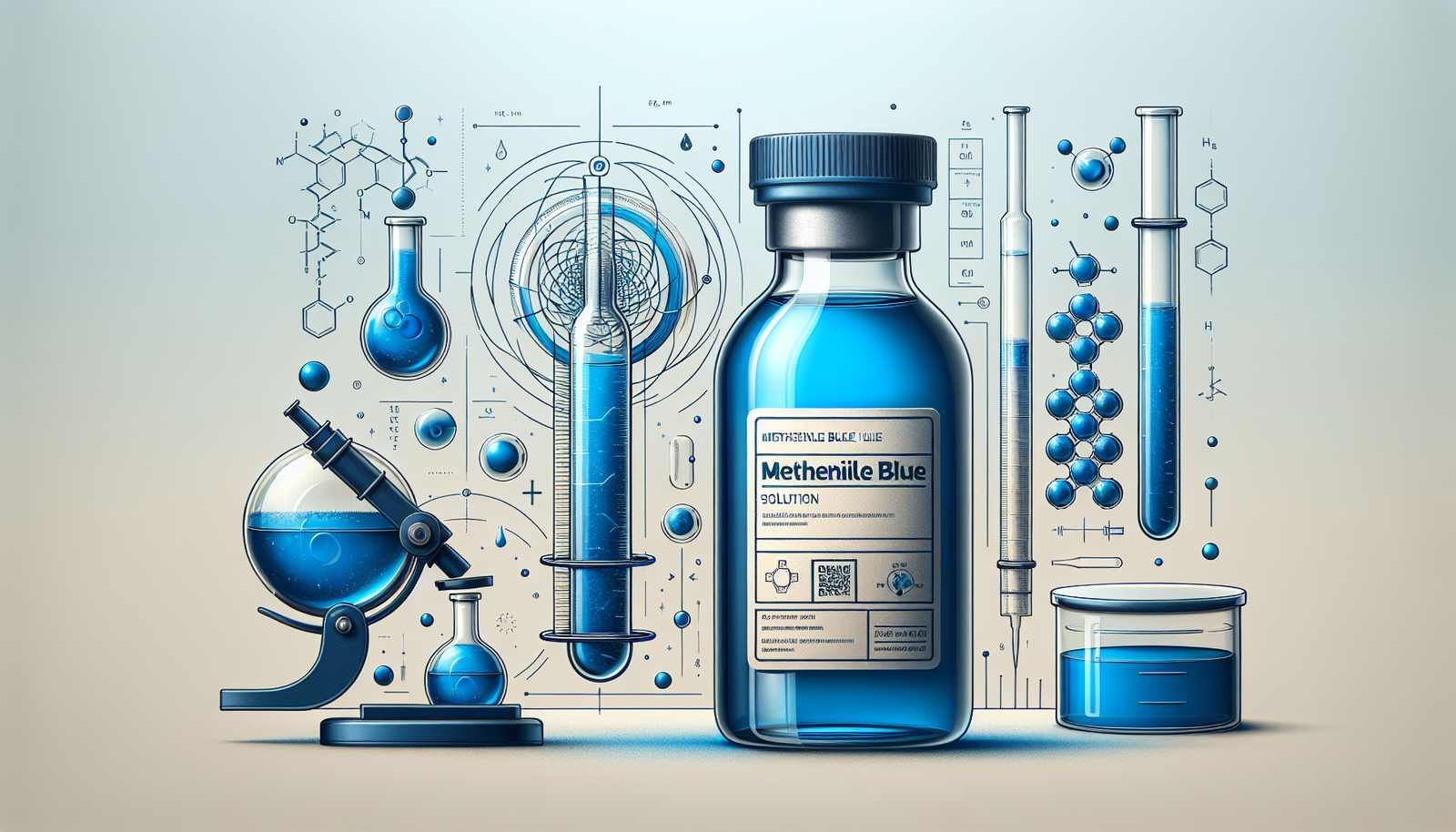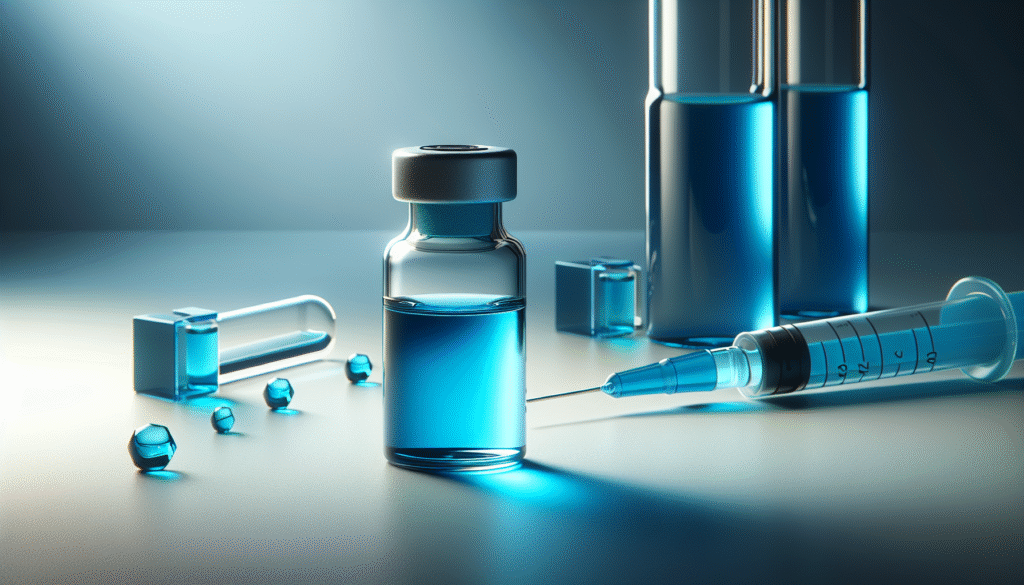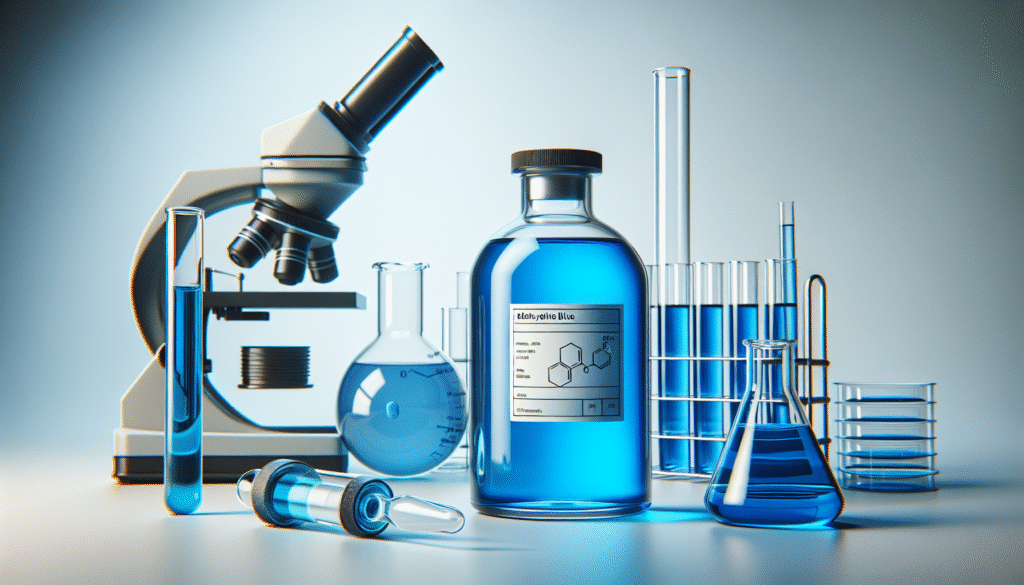
What if you could unravel the mysteries of a compound that has been utilized for over a century across various fields of science and medicine? The compound in question is Methylene Blue. Understanding its properties, uses, and mechanisms can significantly enhance your insights into this remarkable substance.
Overview of Methylene Blue
Methylene Blue is a synthetic dye that is used in several applications, from biological research to clinical treatments. Originally synthesized in the 19th century, it has a deep-rooted history in both dye-making and medicinal use. Its chemical composition allows it to interact with biological systems in unique ways, making it a valuable substance in both laboratories and clinical settings.
Chemical Properties
Methylene Blue is also known as methylthioninium chloride, with the chemical formula C16H18ClN3S. The compound appears as a blue crystalline powder, soluble in water, and is particularly known for its vivid blue color, which makes it easily identifiable.
| Property | Value |
|---|---|
| Molecular Formula | C16H18ClN3S |
| Molecular Weight | 319.85 g/mol |
| Solubility | Soluble in water |
| Color | Blue |
You should note the stability of Methylene Blue under various conditions, which adds to its utility. The compound is stable at room temperature and can maintain its properties unless exposed to light over extended periods.
Historical Context
Understanding the history of Methylene Blue provides crucial context for its current applications. Initially created in 1876, it was recognized as the first synthetic dye. Over time, its uses expanded, particularly in medical applications.
Methylene Blue in Medicine
One of the most significant uses of Methylene Blue in medicine is as an antidote for certain types of poisoning, specifically those involving methemoglobinemia. This condition occurs when hemoglobin is oxidized, impairing its ability to carry oxygen. Methylene Blue effectively converts oxidized hemoglobin back to its functional state.
Other Applications of Methylene Blue
Beyond treating specific medical conditions, Methylene Blue has found a place in various scientific fields.
-
Antimicrobial Agent: Its antimicrobial properties have been researched, making it a candidate for treating infections, particularly those caused by resistant bacteria.
-
Dye and Stain in Laboratories: In microbiological studies, Methylene Blue is often used as a staining agent to visualize cells and tissues under a microscope.
-
Redox Indicator: In chemistry, it is employed as a redox indicator due to its ability to change color based on its oxidation state.

Mechanism of Action
The mechanism by which Methylene Blue operates in various applications is fascinating and complex.
Reduction-Oxidation (Redox) Reactions
At its core, Methylene Blue functions through reduction-oxidation reactions. It exists primarily in two states: an oxidized state and a reduced state. In the oxidized form, Methylene Blue is blue; when reduced, it transforms to a colorless compound.
-
In Cases of Methemoglobinemia: Methylene Blue serves as a reducing agent. It facilitates the conversion of methemoglobin back to hemoglobin by donating electrons.
-
In Microbiology: Its ability to accept electrons allows it to disrupt the metabolic processes of microorganisms, leading to their destruction.
Cellular Respiration
Methylene Blue also plays a role in cellular respiration, particularly in its use as a mitochondrial stain. It can enter cells and localize in mitochondria, allowing researchers to visualize mitochondrial activity and integrity.
Therapeutic Uses of Methylene Blue
The clinical role of Methylene Blue has been extensively researched. It has numerous therapeutic applications, each grounded in its unique properties.
Treatment of Methemoglobinemia
Methemoglobinemia can be congenital or acquired through exposure to certain chemicals or drugs. Methylene Blue is admininstered intravenously in these cases and has been shown to be effective in reversing the condition.
Antidote to Drug Overdose
Methylene Blue may also be prescribed as an antidote in instances of overdose with certain medications, particularly those that induce methemoglobinemia. Its ability to quickly restore normal hemoglobin levels makes it invaluable in emergency medicine.
Neuroprotective Effects
Recent studies indicate that Methylene Blue may have neuroprotective effects, which could play a role in treating neurodegenerative diseases such as Alzheimer’s. Research is ongoing to better understand how Methylene Blue impacts neuronal health and function.

Methylene Blue in Research
Methylene Blue has become an indispensable reagent in scientific research. Its applications transcend mere staining, extending into innovative studies exploring cellular mechanisms, therapies, and diagnostics.
Staining in Histology and Microbiology
In histology and microbiology, Methylene Blue is utilized for staining cells and tissues, enabling visualization under light microscopy. Its engaging blue coloration helps differentiate various cell types, making it a staple in academic and clinical laboratories.
Role in Redox Biology
Methylene Blue’s properties as a redox agent have made it a point of interest in studies investigating biochemical pathways. Researchers explore its influence on electron transport chains and other cellular processes to gain insights that can have broad implications in biology and medicine.
Innovative Applications
Recent innovations have explored Methylene Blue in targeted therapy for cancer. Its properties allow it to selectively accumulate in cancer cells, where it can induce cell death while sparing healthy tissues. This emerging field shows promise for more effective treatment modalities.
Safety and Side Effects
While Methylene Blue is generally considered safe within recommended dosages, awareness of potential side effects is essential. You should be informed about these risks before any application.
Common Side Effects
-
Discoloration of Urine: A harmless effect is blue or green urine. This occurs due to the elimination of unmetabolized Methylene Blue and is not indicative of toxicity.
-
Elevated Blood Pressure: There may be a transient increase in blood pressure; therefore, monitoring during administration is necessary, particularly in susceptible individuals.
-
Allergic Reactions: As with many medications, some individuals may experience allergic reactions, including skin rashes or itchiness. Immediate consultation with a healthcare professional is essential if such symptoms arise.
Contraindications
Certain conditions may contraindicate the use of Methylene Blue. For example, it should be avoided in individuals with G6PD deficiency, as it may exacerbate hemolytic anemia in such cases. Always consult with a healthcare professional before starting any treatment involving Methylene Blue.

Conclusion
In summary, Methylene Blue is a compound with a rich history and a wide array of applications. Its properties allow it to function as an effective treatment in various medical emergencies and as a vital tool in scientific research. Understanding how Methylene Blue works opens up discussions about its potential future uses and reinforces its importance in both clinical and research settings.
As you continue to learn about the versatile applications and mechanisms of Methylene Blue, consider its potential implications for your field of interest. Whether you are involved in medicine, biology, or another science, Methylene Blue serves as a reminder of how deeply interconnected our understanding of compounds can shape our approach to health and research.